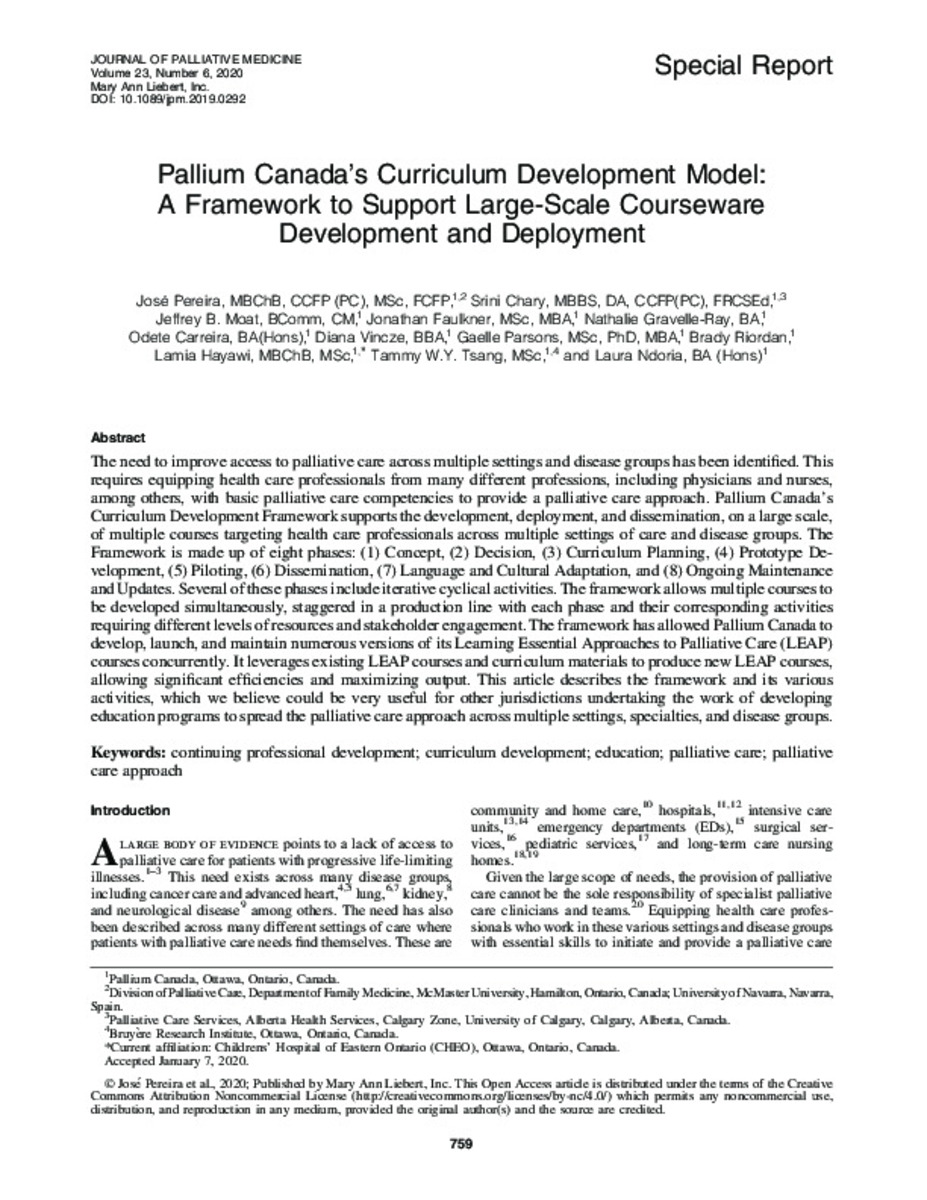Pallium Canada's curriculum development model: A framework to support large-scale courseware development and deployment
Keywords:
Continuing professional development
Curriculum development
Education
Palliative care
Palliative care approach
Publisher:
Mary Ann Liebert
Note:
This Open Access article is distributed under the terms of the Creative
Commons Attribution Noncommercial License (http://creativecommons.org/licenses/by-nc/4.0/) which permits any noncommercial use,
distribution, and reproduction in any medium, provided the original author(s) and the source are credited.
Citation:
Pereira, J. (José); Chary, S. (Srini); Moat, J.B. (Jeffrey B.); et al. "Pallium Canada's curriculum development model: A framework to support large-scale courseware development and deployment". Journal of Palliative Medicine. 23 (6), 2020, 759 - 766
Statistics and impact
0 citas en

Items in Dadun are protected by copyright, with all rights reserved, unless otherwise indicated.







